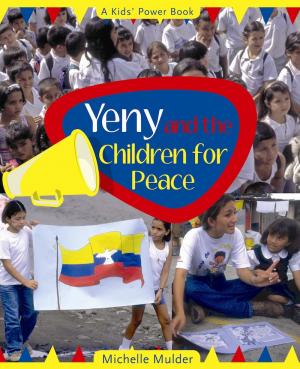Yeny and the Children for Peace is inspired by the Colombian Children’s Movement for Peace that started in 1996. It tells the story of Yeny and her family who have to escape from their mountain village home to the city when a group of armed and violent men arrive. The men force everyone to leave so they can seize the land. When Yeny arrives in the city, she realizes that there is still danger. Beyond the political situation, there is a bully everyone fears in her classroom. Yeny feels frustrated until students at her school decide to organize a peace carnival. Soon this event becomes a peace movement across the country. Children decide to hold a national children’s vote to highlight what they feel are the most important rights of a child (survival, peace, love and family). Since many parents fear there might be violence on this day they decide not to let their children attend. The children want to attend and, through brainstorming and discussions, decide to send letters to the armed groups that are expropriating land in the country. They ask for one day of peace so they can vote without fear of violence. The groups send back letters agreeing to this day of peace. All across Columbia children vote. For one day there are no shootings, kidnappings or bombs. This was the result of children wanting to make change, getting together and talking. They took action and made a difference.
This book would be a wonderful read-aloud for the junior grades. It connects to the Grade 5 Social Studies curriculum as a lead-in to understanding the rights and responsibilities of citizens and importance of the protection of human rights. It is perfect for any teacher in junior or intermediate grades who is talking about global citizenship. While children read and discuss the book they will begin to reflect on their lives while feeling compassion or empathy for the children in the book. They will become aware of problems that occur around the world and through this connection become inspired to help make a difference. Learning about children their own age who were able to work together to create peace for a day is both empowering and affirming. In a classroom where students are creating action plans to make a difference in their community or country, a story like this would make children feel empowered to take action and make a difference in the world around them.
Jane Ranson is a member of Limestone Teacher Local.
